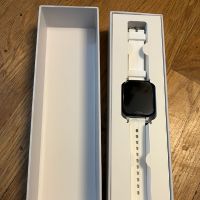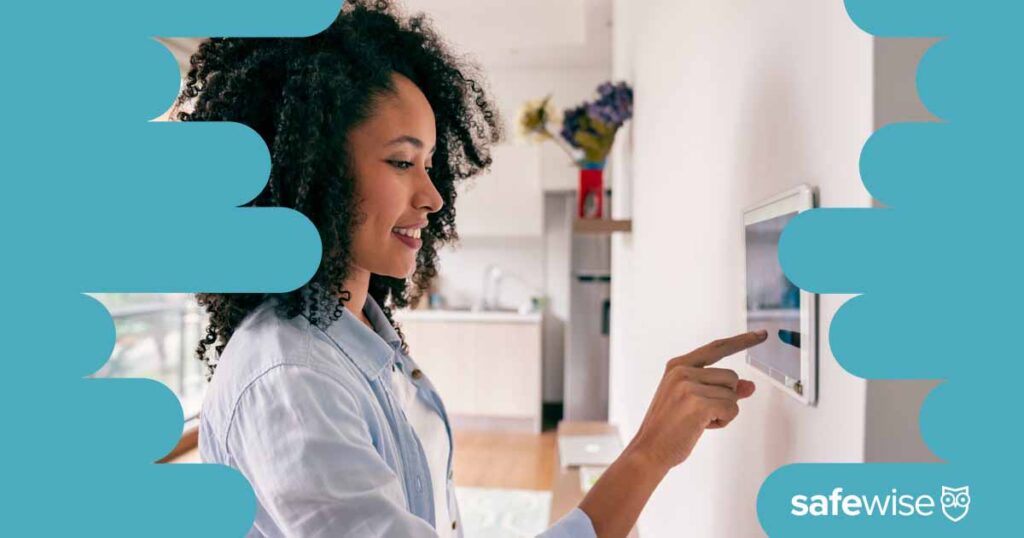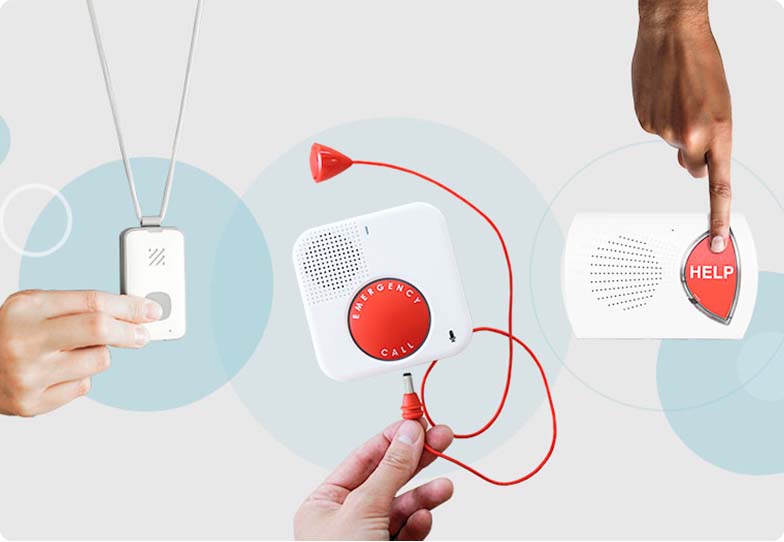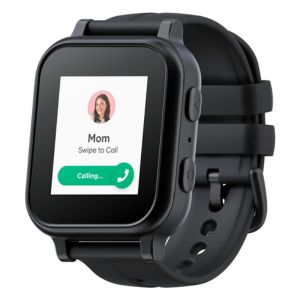We tested GPS trackers for kids—including kids smartwatches—to bring you our faves based on GPS tracking, location accuracy, alerts, portability and battery life. See why AngelSense is our best tracking device for kids.
Best GPS Trackers and Tracking Devices for Kids
SafeWise experts have years of firsthand experience testing the products we recommend. Learn how we test and review.
Want to keep your little one safe at school, play, and everywhere in between? The best GPS trackers for kids can help you keep tabs on your kiddos and ensure their safety with location tracking.
The AngelSense GPS tracker was designed for kids with special needs in mind. It has two-way talk, a listen-in function, transit alerts, and location updates to pinpoint your child when needed.
Our budget pick, Track GPS, is a bite-sized device that has advanced indoor tracking that can even sense elevation and tell you which floor it's on. Tracki is the size of a memory card, but can log an impressively long location history and includes motion alerts for high-speed movement. SecuLife S4 comes with a built-in SIM card to make setup easy. Like our top pick, AngelSense, the SecuLife S4 has a two-way talk feature that allows you to talk with your kiddos from the app.
While we tried to limit this lineup to standalone GPS devices, check out our review of the best kids' smartwatches for even more options. Our in-depth reviews and product testing can help you find the right tracking device for kids for your family and lifestyle, whether you've got kids with busy schedules, special needs, or newfound independence.
🔥 AngelSense is currently offering a FREE kids GPS tracking device (regularly $229) when you sign up for a month-to-month or annual service plan!
Info current as of publish date. Offers and availability may vary by location and are subject to change.
Top 5 GPS trackers for kids
- : Best overall and for kids with disabilities
- : Smartwatch pick
- : Budget pick
- : International pick
- : Best for multiple kids

What is the best GPS tracking device for kids?
Amazon.com price as of post date. Offers and availability may vary by location and are subject to change. Read full disclaimer.
*Limited time deal.
**$30 activation fee. New lines only. No contract required.
Video: Best GPS tracker for kids
Subscribe to our YouTube channel and learn how to protect your home, loved ones, and belongings.
Not quite what you're looking for?
Check out our reviews of similar devices for pets, people with dementia, and the best GPS trackers for general uses.
What to look for in a GPS tracker for your kids
Kids' GPS trackers can be tucked into smartwatches or pocket-sized devices with carrying accessories. They should be comfortable and fun for kids to use but durable enough to last all day and send accurate location reports.
After 10-plus years of testing and wearing family safety devices, here's a peek into our process of choosing and testing the top kids trackers on the market to help you find the best GPS tracker for your family:
Whether it's on a smartwatch or tucked in a bag, a kid's GPS tracker needs to be accurate.
The best GPS devices for kids update location data in regular intervals to keep up with movement. Many of them use a cellular signal to send that info, which may require a monthly subscription to upkeep.
Kids play rough, so be sure their tracker can withstand all the roughhousing, horseplay, and hazards they throw at it. Look for waterproof GPS tracker models with ratings IP65 and up that can handle puddles and spills too.
Choose a GPS tracker for kids that’s easy for you and your child to use. It shouldn’t interfere with their range of motion or get in the way. Standalone devices should come with attachable accessories like clips, lanyards, or wristbands.
The kids' GPS trackers on this lineup are best for early elementary school kids who aren't old enough for a device of their own. While some anti-tamper features, consider a smartwatch for older school aged kids.
Not all tracking devices for kids are created equal. Those with Bluetooth are best for the youngest kids who need to stay close by. Once they wander out of range from the signal, you'll get an alert.
More advanced LTE tracking is better for older kids who go to school or activities on their own. The most advanced tracking of this type works across state and even international lines.
Look for a device with adjustable settings to avoid false alarms or blowing up your phone.
Your kids' GPS tracker should be customizable to let you check on your kids when you want and notify you when there’s trouble. Custom alerts for geofences allow the device to ping you when it leaves or enters areas like school, your neighborhood, or trusted places.
The best kids' GPS devices come with a panic button that let your child alert you when something’s wrong or they need help.
This feature lets you speak to your child through their GPS tracker like an intercom so you can ask them where they are or if they need help.
1. AngelSense Kids’ GPS tracker: Best overall and for kids with disabilities
AngelSense GPS tracker is our overall favorite tracker for kids, but it comes with features like drop-in listening to its sensory sensitive wearing options which makes it perfect for kids with special needs and autism.
As a small tracker or wristwatch, AngelSense allows kids their full range of motion while delivering accurate readings to parents in the app.
Some our favorite features include Safe Ride monitoring for kids who take public transit or the school bus, near-instant location alerts, and a two-way talk feature.
Standout feature: Regular updates
AngelSense sends consistent updates throughout your day, so you can feel assured of your child's safety. Check in, listen in, and hold onto your peace of mind while your kids go about their day.
Beyond plenty of tracking capabilities—from safety-zone setup to 10-second updates—AngelSense’s Listen-In function lets parents listen to how their child’s day is going, ensuring they’re not mistreated, neglected, or lost.
With AngelCall two-way voice, you can talk to your child at any time, and they don’t need to worry about buttons or clicking on anything to chat. Plus, you can see what your child has been up to with diary logs that input data every 30 seconds.
AngelSense’s great features do come at a price. Plans start around $30 and go up from there, depending on whether you pay up front or in installments.
This wearable GPS tracker isn't just for kids, either. We recommend AngelSense for people with dementia prone to wandering off.
Read our full review of AngelSense.
Video: AngelSense GPS Tracker Review
Subscribe to our YouTube channel and learn how to protect your home, loved ones, and belongings.
2. Gabb Watch 3: Smartwatch pick
*No contract required. $30 activation. New lines only.
Amazon.com price as of post date. Read full disclaimer.
The Gabb Watch 3 is an affordable and simple watch with GPS tracking, no camera, and a digital pet helps motivate kids to stay active and complete chores.
It's also one of the easiest kids smartwatches to set up since it comes with its own SIM card. Plus, Gabb is one of only two COPPA-certified devices on our list and the newest model (Gabb Watch 3) includes IP68 water resistance and an ultra-strong Gorilla Glass 3 screen to withstand whatever kids put it through.
Along with smartwatches, Gabb also has kid-safe smartphones with its own music streaming service. Your kids can choose from family friendly libraries to create their own playlists and share with their friends.
The GPS tracker in the Gabb Watch makes it easy to find your kid any time, whether they're at ball practice or the park. You can view their location in real-time on the MyGabb app or schedule automatic location updates every 15 minutes or so. You can also set up “safe zones”—like school, home, or friends' houses—and get notifications when your child enters or leaves these areas. The idea is that you can let your guard down a bit and not worry about your kid’s whereabouts unless you get that “exiting safe zone” ping.



Gabb Watch 3 Review: Hands-on Testing
While testing the Gabb Watch 3, our tester took her son to a community event at a Botanical Garden to see how location tracking, calling and texting worked in a crowded place with a spotty cell connection. The cell connection worked fine when making a call or sending texts, which was great, but the gps locator was way off, which is not helpful if you're trying to pinpoint your child at a crowded event. Since they were able to call each other it wasn't an issue.
The battery only lasted about a day even though it says it should last 48 hours. However, when the battery is low, you get a notification, so that's helpful. As long as you remember to charge the watch at night it's not an issue and the new magnetic charger is super slick.
We like smartwatches to help keep kids and parents in touch, but your child's device might not be welcome in the classroom. Schools are concerned about distraction, privacy, and cheating.
Be sure to talk to your child's teacher or principal before sending them to school with a smartwatch. And you can help educators out—use parental controls (it's called "Do Not Disturb" on the TickTalk 4) to shut down the device during class.
—Krystal R., Gabb Watch 3 tester
Image credit: Krystal Rogers-Nelson, SafeWise.
3. Tack GPS: Budget pick
If you're looking for a GPS tracker that works for kids, vehicles, and even pets, Tack GPS is a low-budget option that works around the world. This super-simple GPS tracker trades some of the more kid-focused features for advanced location abilities.
Along with GPS tracking, it also works with Wi-Fi and IoT to keep it accessible indoors and in areas with a poor cell signal. That IoT (Internet of Things) connectivity keeps the battery drain to a minimum, stretching it to 30 days between charges.
From the Tack app, you can share your child's location and permissions with trusted adults such as your spouse, their grandparents, and other guardians.
Tack has two GPS trackers available, both with similar abilities. The standard Tack tracker starts at $59 and works in over 30 countries. Or if you and your family travel often, you can opt for the $79 Global version that operates in over 185 countries.
But what really won us over about Tack's pricing was its monthly plans, which start at $3.00 per month. However, that cost-cutting price needs to be paid up front with the device, leaving you with a hefty initial purchase and a year of service minimum.
4. Tracki: International pick
The tiny Tracki is about the size of a memory card and works in around 190 countries worldwide. It's a fairly no-frills tracker, but it comes with essential features like geofencing and an SOS button.
It's small enough to fit inside a child's pocket, or you can attach it to the included lanyard, keychain, or belt clip to turn it into a wearable tracking device for kids. The Tracki also comes with a silicone cover to protect it from water damage.
From your online account or companion app, you can set up geofence zones and change the frequency of location check-ins. The Tracki's battery lasts up to 72 hours with minute-by-minute check-ins. If you check in once a day, the battery can last more than a month. You can also purchase replacement batteries as needed.
The Tracki itself costs around $60—but it's often available on Amazon for around $19. You'll pay an extra $20 each month for service; however, if you pay annually, the price lowers to around $10 per month.
5. SecuLife S4: Best for multiple kids
SecuLlife has several location-tracking options for kids of different ages, making this brand convenient for families with kids of all ages.
Our favorite of the bunch is the SecuLife S4 which has features perfect for younger and older kids alike. It has two-way talk for kids too young for a cellphone and a speed limit alert for kids old enough to drive.
At only $39 upfront, it comes with many of the same options you'd find in an AngelSense tracker but for a fraction of the price. The S4 works in Canada, the US, and Mexico through a parent app where you can add multiple trusted adults.
It's about the size of an AirPods case, making it ultra-portable without all the distractions of other solutions like a smartwatch. If your child needs your help, they can call you through the tracker or activate the SOS button.
In an emergency (or whenever they press the emergency button), the SecuLife S4 will contact the adults in the order listed in the app. So if you aren't available at that moment, it will call the next adult down (your spouse or their grandparents, for example).
Because the SecuLife S4 has a SIM card inside, you'll need to pay for cellular service every month. The brand has an option to pay annually (around $24/month) or month-to-month for $29 per month.
Active Halo from Amber Alert GPS
Child GPS trackers like Active Halo from Amber Alert make the darkest scenarios a little brighter.
This child tracking device uses 4G LTE to track location, send alerts, and detect speed. The Amber Alert GPS locator helps you keep tabs on your child’s whereabouts at all times.
You can program up to 20 safe zones and get updates on your child’s location every five minutes. To prevent distractions during school, you can place the device in silent mode.
All of these features come at a price, though—the Amber Alert GPS Locator is one of the most expensive devices on our list.
Standout feature: Sex-offender detection
Amber Alert GPS is the only device that alerts you if your child is close to a registered sex offender’s address.
—Mary Anne Keegan, CMO of Amber Alert GPS
Maybe you had a specific GPS tracker for your kids in mind, but we've come across several bigger names that have since been discontinued or are no longer available.
- Relay Kids Smartphone
- My Buddy Tag
- Samsung SmartThings Tracker
- Samsung Galaxy SmartTag
Final Word: Best GPS tracker for kids
AngelSense is our top pick for the best kids' GPS trackers. We love its features for parents and kids with special needs, like the sensory-sensitive design. But it's also a handy device for anyone watching over small children or even older adults. Although its monthly price is the highest of the bunch, that price includes the confidence of constant location updates and quick access to your loved ones.
Our other picks—Gabb, Tack, Tracki, and SecuLife—are small but mighty. They all offer accurate location reporting using multiple methods beyond GPS, geofencing, and a mobile app to manage your settings.
So whether you're sending your kids off to school on their own for the first time or going on a family outing together, GPS trackers are handy for parents with youngsters who are too little for their own devices.
Want to keep track of more than just your kids? Check out our full lineup of the best GPS trackers for any situation.
Parent survey statistics
One minute you’re cruising through the grocery store with your kid in tow, the next minute your little one has disappeared without a trace. At least one in three parents have been there.
How often do parents lose their kids in public? And how does this affect parents’ decisions about purposely letting their children out of sight or keeping tabs on them with a GPS tracker? In October 2021, we surveyed 1,000 parents with kids between the ages of 7 and 17 to get some answers.
Survey Results: All parents
Our surveyed parents reported the following:
- One in three parents have lost a child in a store.
- Around 32% have lost a child at a crowded event.
- Over one in five have lost a child at a park.
- Nearly one in five have lost a child for more than an hour.
- Nearly one in five have called police about a lost or missing child.
We wanted to understand how these scary situations affected parents’ willingness to let their kids roam free. According to our survey, the average parent lets their kid do the following:
- Walk home alone at age 12
- Take public transportation alone at age 14
- Play outside unsupervised at age 11
- Stay home alone at age 13
- Trick or treat unsupervised at age 13
- Have a cell phone at age 12
Those ages didn’t change for parents who had lost a child at least once, with one exception: cell phones. Parents were more likely to allow their children to have a cell phone by age 10 if the following applied for them:
- Had a special needs child
- Had lost their child in a store
- Had lost their child at a crowded event
- Had lost a child at a park
- Had called police about a lost or missing child
Parents with only one child were less likely to have lost their child in all circumstances. Parents with at least one special-needs child were more likely to have lost a child.
Survey Results: Parents of children with special needs
Surveyed parents with at least one special needs child reported the following:
- Nearly one in two have lost a child in a store.
- More than 50% have lost a child at a crowded event.
- Over two in five have lost a child at a park.
- Over one in three have lost a child for more than an hour.
- Nearly two in five have called police about a lost or missing child.
With a kids GPS tracker, you and your child won’t become a scary statistic. If your child slips away in a crowd or is late coming home from a friend’s house, you can look up their exact location before your imagination runs wild.
Around two-thirds of all parents think their oldest child wouldn’t mind them tracking their location. If your child seems too old for our recommended kids GPS trackers or smartwatches, consider installing a parental control app with location-tracking on their phone.
GPS tracker for kids FAQs
While helicopter parenting is rarely necessary, there are some cases that call for giving your child a GPS tracker. For example, a GPS device can help parents with kids who live in multiple households or have special needs keep tabs on their whereabouts. Toddlers and little tykes may also benefit from a small tracker on their shoelace or clothes in crowded places.
Watch our video to learn more: Why kids GPS trackers are a great alternative to a cell phone
Of course. GPS trackers use the same technology we have in our phones. Bluetooth, GPS locating, and cellular signals are the main methods these devices use.
Most charges last for a couple days. If you plan to use a tracker every day, charge it at night when they get home just like you would charge your cell phone.
Geofencing is a feature found in many different types of GPS trackers. It allows you to draw digital boundaries around trusted areas like schools, homes, and neighborhoods. When your child enters or leaves that area, you’ll get a notification.
Related articles on SafeWise
Product prices and availability are accurate as of the date/time indicated and are subject to change. Any price and availability information displayed on Amazon at the time of purchase will apply to the purchase of this product. Safewise.com utilizes paid Amazon links.
Certain content that appears on this site comes from Amazon. This content is provided “as is” and is subject to change or removal at any time.
Recent Articles






